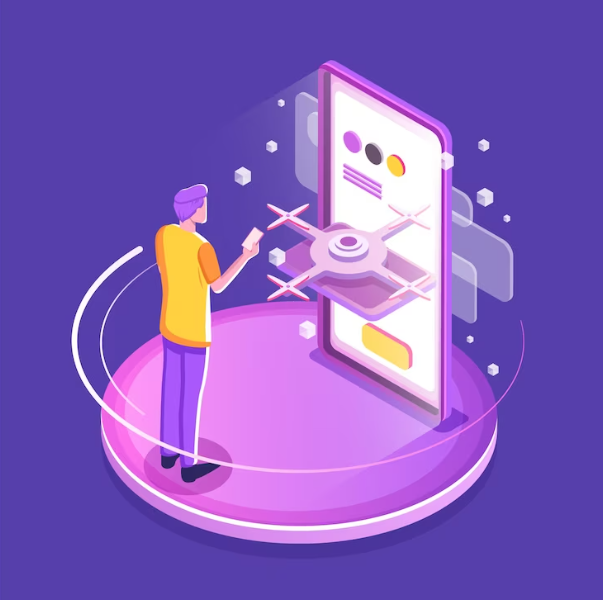The gaming industry is evolving at an unprecedented pace. Traditional video games have long been the standard, captivating millions of players worldwide. However, a new contender is rapidly gaining traction: NFT gaming. Non-fungible tokens (NFTs) are revolutionizing the gaming landscape, offering players and developers exciting new opportunities. But why should one choose NFT gaming development over traditional video games? Let’s dive into the compelling reasons that make NFT gaming a game-changer in the industry.
1. Ownership and Control
True Ownership of In-Game Assets
In traditional video games, players spend countless hours and money acquiring in-game assets such as skins, weapons, and characters. However, these assets are confined within the game’s ecosystem and do not belong to the player. NFT gaming flips this model on its head. With NFTs, players have true ownership of their in-game assets. Each asset is unique, verifiable on the blockchain, and can be traded, sold, or transferred outside the game. This ownership provides players with more control and flexibility over their investments.
Enhanced Player Agency
NFTs empower players by giving them more agency over their gaming experience. In traditional games, players’ assets and progress are often tied to centralized servers. If the game shuts down or the server experiences issues, players risk losing their hard-earned assets. NFT gaming development mitigates this risk by decentralizing asset ownership, ensuring players retain their assets regardless of the game’s status.
2. Interoperability
Cross-Game Compatibility
One of the most exciting aspects of NFT gaming is interoperability. NFTs enable cross-game compatibility, allowing players to use their assets across different games and platforms. This feature is a stark contrast to traditional games, where assets are restricted to a single game. Interoperability opens up a world of possibilities, creating a seamless and enriched gaming experience.
Expanding Ecosystem
As the NFT gaming ecosystem grows, so does the potential for collaboration and integration between games. Developers can create interconnected worlds where assets from one game can be utilized in another. This interconnectedness enhances the value and utility of NFTs, making them more appealing to players and developers alike.
3. Economic Opportunities
Play-to-Earn Model
The play-to-earn model is a revolutionary concept introduced by NFT gaming. Players can earn real-world value by participating in games and achieving in-game milestones. Traditional games often require players to spend money without offering a return on investment. In contrast, NFT games reward players for their time and effort, providing tangible economic opportunities.
Secondary Markets
NFTs can be traded on secondary markets, allowing players to buy, sell, and exchange their assets. This creates a dynamic economy within the gaming community, where players can profit from their in-game achievements. The ability to monetize gaming assets fosters a more engaged and motivated player base.
Latest Insights
According to a report by DappRadar, the NFT gaming market generated over $2.32 billion in the first quarter of 2023 alone. This significant figure highlights the growing popularity and economic potential of NFT gaming. Furthermore, major gaming companies are starting to invest in NFT development services, recognizing the lucrative opportunities this new market offers.
4. Transparency and Security
Blockchain Technology
NFT gaming leverages blockchain technology, which provides unmatched transparency and security. Every transaction and asset is recorded on a decentralized ledger, ensuring authenticity and preventing fraud. Traditional games, on the other hand, rely on centralized servers that are vulnerable to hacks and data breaches.
Trust and Fairness
Blockchain technology also promotes trust and fairness in gaming. Smart contracts enforce rules and transactions automatically, eliminating the need for intermediaries and reducing the risk of manipulation. This transparency builds trust between players and developers, fostering a healthier gaming ecosystem.
5. Community Engagement
Player-Centric Development
NFT gaming often involves a more player-centric approach to development. Developers can engage with their community, seeking feedback and suggestions to improve the game. This collaborative approach results in games that better reflect the desires and preferences of the player base.
Community Governance
Some NFT games incorporate decentralized autonomous organizations (DAOs), allowing players to participate in governance and decision-making processes. This level of involvement strengthens the bond between players and developers, creating a more loyal and active community.
6. Innovation and Creativity
Unique Gaming Experiences
NFTs enable the creation of unique and innovative gaming experiences. Developers can experiment with new mechanics, gameplay styles, and economic models that were previously not feasible in traditional games. This freedom to innovate leads to more diverse and engaging games.
Artistic Expression
NFTs also provide a platform for artistic expression. Artists can create and sell unique in-game assets, contributing to the game’s aesthetic and cultural value. This integration of art and gaming enhances the overall experience and attracts a broader audience.
7. Sustainability and Long-Term Value
Persistent Value
NFTs retain value over time, unlike traditional in-game assets that lose relevance as games become obsolete. The permanence and traceability of NFTs ensure that they remain valuable collectibles, even after the game is no longer actively played. This sustainability attracts players who seek long-term value from their investments.
Environmental Considerations
While blockchain technology has faced criticism for its environmental impact, innovations like proof-of-stake (PoS) consensus mechanisms are addressing these concerns. PoS significantly reduces energy consumption compared to traditional proof-of-work (PoW) systems. As more NFT games adopt eco-friendly blockchain solutions, the environmental footprint of NFT gaming will continue to decrease.
8. Accessibility and Inclusivity
Lower Barriers to Entry
NFT gaming lowers the barriers to entry for players and developers alike. Blockchain technology and NFT development service offer tools and platforms that simplify game creation and asset management. This accessibility democratizes the gaming industry, allowing indie developers and small studios to compete with major companies.
Diverse Monetization Strategies
NFT games provide various monetization strategies, such as selling rare assets, offering in-game purchases, and earning through gameplay. This diversity allows developers to create sustainable revenue models that cater to different player preferences and financial capabilities.
Conclusion
The rise of NFT gaming development is reshaping the gaming industry, offering numerous advantages over traditional video games. From true ownership and economic opportunities to innovation and community engagement, NFTs provide a compelling case for adoption. As the technology continues to evolve and gain mainstream acceptance, the gap between NFT and traditional gaming will only widen.
Choosing NFT gaming development over traditional video games is not just a trend; it’s a paradigm shift. For players, it means more control, value, and opportunities. For developers, it opens doors to innovation, engagement, and sustainable growth. Embrace the future of gaming with NFT development services and be a part of this exciting revolution.




